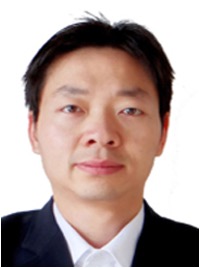A Fast Phase-field Model for
Polycrystalline Solidification and the Cross-scale Simulation of the
Microstructure Evolution in U-based Alloys
Yun Chen 1*, Tongzhao Gong 1,
Yongpeng Shi 1, Wenlin Mo 2, Jun Wu 2,
Xing-Qiu Chen 1, Dianzhong Li2
1 Shenyang National Laboratory for Materials Science, Institute of Metal
Research, Chinese Academy of Sciences, 72 Wenhua Road, Shenyang 110016, China;
2 Institute of Materials, China Academy of Engineering Physics, 621907
Jiangyou, Sichuan, China
ABSTRACT: The phase-field (PF)
approach has been emerged as a powerful method to simulate the solidification
microstructure evolution. However, because of the low computing efficiency it
is always a big challenge to quantitatively study the solidification in scale
of experiments for polycrystalline materials. To enhance the computing
efficiency, we employed the front-tracking method to calculate the orientation
evolution which substantially reduces the equations needed to be solved.
Meanwhile, the phase-field model is nonlinearly preconditioned that allows to
solve the governing equations on a mesh with much coarser elements than those
used in the conventional methods. In addition, the numerical algorithm of the
distributed parallel finite element method on an adaptive mesh is developed to
further accelerate computations. Simulations of multi-dendrites growth of
Al-4wt.%Cu demonstrate that the proposed fast simulation approaches enable
quantitative simulations of a large number of dendrites growth in scale of
centimeters. In order to simulate the microstructure and microsegregation
evolution of U-Nb alloys during solidification, the cross-scale calculations
are performed. The crucial physical parameters of the alloys for PF model, such
as the thermodynamic data and the diffusion kinetics are obtained by means of
atomic-scale calculations using the ab initio molecular dynamics (AIMD) method.
Then large-scale simulations which are comparable to the U-Nb alloy experiments
are performed to predict the variation of grain size and microsegregation with
cooling rate and Nb content. Based on the polycrystalline simulations, a new
microsegregation model is proposed which is different from conventional Lever
rule and Scheil equation, but predicts a much better solute concentration
during solidification. This work was supported by the Science Challenge Project
(Grant No. TZ2016004) and the Youth Innovation Promotion Association CAS.
Keywords: phase-field model; solidification microstructure; cross-scale simulation; U-based alloy

Yun Chen, PhD, associate professor, has completed his PhD IMR, CAS. He works mostly on the development of large-scale PF simulations and the corresponding efficient numerical calculation methods, as well as the in situ observation of microstructure evolution during solidification by synchrotron X-ray radiography. He has published more than 25 papers in reputed journals and has been supported by several projects.